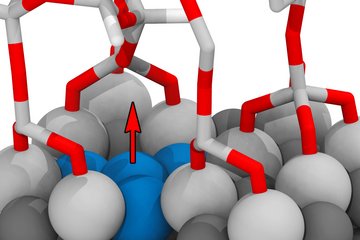All genres
261.
Talk
An atomistically-informed crystal plasticity model to predict the temperature dependence of the yield strength of single-crystal tungsten. XXV International Workshop on Computational Micromechanics of Materials, Bochum, Germany (2015)
262.
Talk
An atomistically-informed crystal plasticity model to predict the temperature dependence of the yield strength of tungsten. DGM AK Mikrostrukturmechanik, Karlsruhe, Germany (2015)
263.
Talk
Application of a Spectral Method Framework to Interrogate the Influences of Experimental Uncertainty on Crystal Plasticity. Materials Science & Technology 2015, Columbus, USA (2015)
264.
Talk
Including damage modelling into crystal plasticity simulation. XXV International Workshop on Computational Micromechanics of Materials, Bochum, Germany (2015)
265.
Talk
Multiscale micromechanical modelling for advanced high strength steels including both the TRIP and TWIP effect. XXV International Workshop on Computational Micromechanics of Materials, Bochum, Germany (2015)
266.
Talk
DAMASK: The Düsseldorf Advanced Material Simulation Kit for studying crystal plasticity using an FE based or a spectral numerical solver. Seminar of the Centro Nacional de Investigaciones Metalúrgicas (CENIM) del CSIC , Madrid, Spain (2015)
267.
Talk
Multiscale model of strength in single crystal tungsten under uniaxial and biaxial loading. 13th U.S. National Congress on Computational Mechanics, San Diego, CA, USA (2015)
268.
Talk
Spectral Method Simulation of High Phase-Contrast Materials: A Joint Numerical-Experimental Study. 9th European Solid Mechanics Conference ESMC 2015
, Madrid, Spain (2015)
269.
Talk
Multi-scale Micromechanics and Damage: From Model Development to Real Systems. IEK-Kolloquium „Simulation von Energiematerialien“
, Jülich, Germany (2015)
270.
Talk
Spectral Method Simulation of High Phase-Contrast Materials: A Joint Numerical-Experimental Study. 12th International Conference on the Mechanical Behavior of Materials ICM 12
, Karlsruhe, Germany (2015)
271.
Talk
A crystal plasticity model for advanced high strength steels including both TRIP and TWIP effect. 12th International Conference on the Mechanical Behavior of Materials ICM 12
, Karlsruhe, Germany (2015)
272.
Talk
Multiscale model of strength in single crystal tungsten under uniaxial and biaxial loading. 1st Pan-American Congress on Computational Mechanics, Buenos Aires, Argentina (2015)
273.
Talk
Materials Simulation: Mechanisms and Processes. BMBF Wing Conference, Dresden, Germany (2015)
274.
Talk
Crystal Plasticity Simulations? Fundamentals, Implementation, Application. Seminar „Numerische Mathematik und Mechanik“, Institut
für Mechanik, Universität Duisburg-Essen
, Essen, Germany (2015)
275.
Talk
Multiscale model of strength in single crystal tungsten under uniaxial and biaxial loading. TMS 2015, Orlando, FL, USA (2015)
276.
Talk
Numerically Robust Spectral Methods for Crystal Plasticity Simulations of Heterogeneous Materials. TMS 2015, Orlando, FL, USA (2015)
277.
Talk
Multiscale modelling of hydrogen embrittlement in metals. DPG Spring Meeting, Berlin, Germany (2015)
278.
Talk
Experiments on and Simulation of Dual Phase Steel Micromechanics. DGM AK Mikrostrukturmechanik, Kassel, Germany (2015)
279.
Talk
Experimental and Numerical Investigations on Dual Phase Steel Micromechanics. GLADD-Meeting, Leuven, Belgium (2015)
280.
Talk
A Virtual Laboratory to Derive Mechanical Properties. M2i Conference "High Tech Materials: your world - our business"
, Sint Michielgestel, The Netherlands (2014)











